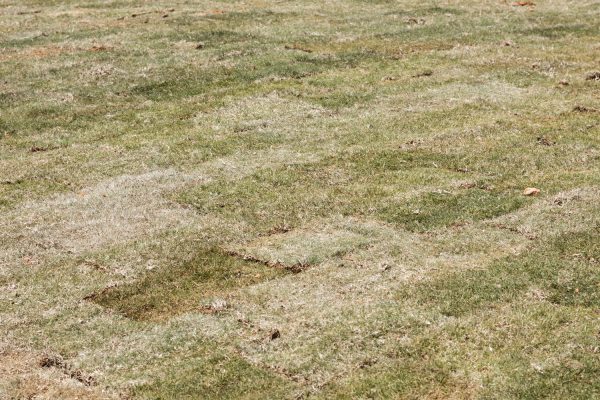Rocks add a certain ruggedness and charm to any garden. If you are planning to build a rock garden for your home, you are probably looking into growing shrubs. Fortunately, we looked into this topic and we can teach you the best ways we've found to plant shrubs in your new rock garden.
How to Plant Shrubs in Rock Garden:
- Prepare the site by laying down landscape fabric and edging to your planned rock garden area.
- Lay down your foundation rocks and fill the first course with sandy soil for good drainage.
- Place the second layer of rocks. Make sure to leave some space for the areas where you want to put the shrubs and other small plants. The crevices of the areas with shrubs should be deep, but other smaller plants will do well in shallow areas.
- Fill the bottom with gravel for drainage before adding well-draining soil and compost.
- Plant your shrubs and other plants according to your plan. It is best to group plants in threes so that they are not scattered too far apart.
- Intersperse some rocks in between the plants. You may use small boulder chunks, pebbles, or other small stones to fill the gaps.
- Water the plants and enjoy your new rock garden!
Creating your own rock garden is a great way to make use of all your garden space. Even small spaces will benefit from a well-kept rock garden. Keep reading this post because we will give you tips on how to beautify your rock garden, as well as how to choose the best plants to grow in these areas.
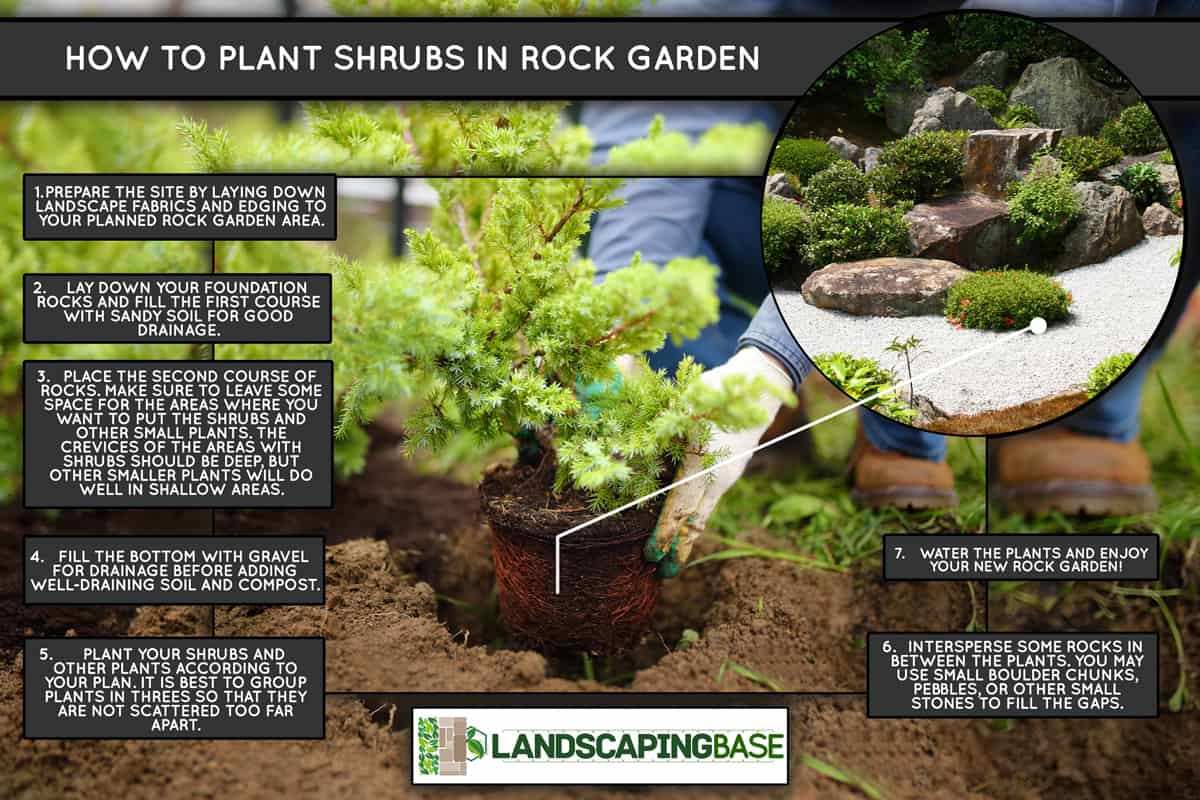
How To Plant Shrubs In A Rock Garden
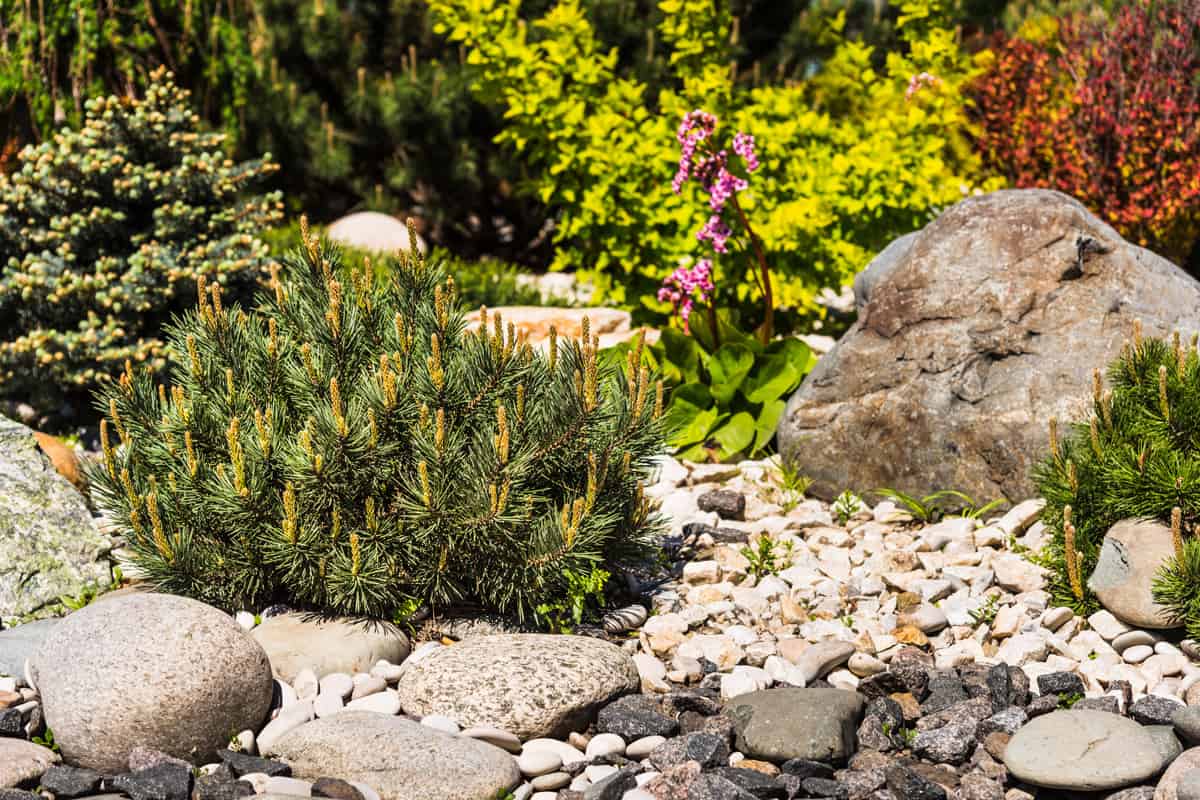
Rock gardens are great additions to your space to create an additional visual appeal to the luscious greens of your yard. In nature, it is quite impossible not to see rocks or stones amongst the plants. Having a rock garden will emphasize this particular beauty of plants in their natural setting.
One of the best things about having a rock garden is being able to utilize all the nooks and crannies for additional plants. To make a rock garden unique, you can add shrubs and other flowering plants to create an arrangement that can become the garden's focal point.
1. Prepare The Site
When building a rock garden, it is important to prevent weeds and grass that are under the rocks from growing and taking over the other plants. Before you start building your rock garden, it's important to pull out as much grass and weeds before digging the soil for the foundation rocks.
Get this landscape fabric on Amazon.
Lay down a layer of landscape fabric or geotextile on the ground to prevent weeds and grass from growing in your rock garden. To install the fabric properly, dig a 6-inch-deep trench around the perimeter of the rock garden and push the fabric edges to the trench anchors so they don't pull up.
Grab this landscape edging on Amazon.
At this point, you can also install a landscape edging strip to prevent the rocks from moving out of their positions. Overlap the seams of the edging with the landscape fabric and secure them using garden staples to prevent the fabric from pulling up.
2. Lay Down Foundation Rocks
The first layer of rocks for your rock garden will consist of foundation rocks. These rocks should be the biggest and heaviest of all the rocks that you will use for your garden. Lay them out in a circle as this will become the perimeter of your planned garden.
After placing the rocks, fill the first layer of your rock garden with sandy soil to provide drainage. If you don't have this kind of soil, you can add compost and sand to your clay soil so it drains the water better. Walk on the soil after putting them on the ground to pack them down.
3. Place The Second Layer Of Rocks
The second rock layer will be the center of your rock garden. These rocks are smaller and more decorative because they will be the ones that show up along with your plants in the rock garden. Strategically place the rocks according to your chosen design.
Always remember to leave spaces and crevices for your rock garden plants to grow. The crevices should be deep if you are planning to plant shrubs and other flowering plants. Succulents, and other similar plants will be happy in shallower crevices.
4. Fill The Bottoms For Drainage
After getting all the rocks settled for the second course of the rock garden, fill the crevices with some gravel or pea rocks to provide drainage for the plants. Next, place a layer of well-draining soil and compost for the plants you will be adding.
5. Plant The Shrubs
Begin planting the shrubs and other plants in the crevices you have created. A good rule of thumb is to plant in threes. Group similar plants together or mix and match them according to the plan you've created. Shrubs that can grow bigger than other plants can stay at the bottom.
To plant the shrubs, dig a small hole in the soil that you've placed in the crevices of the rocks. If you are looking to use rock mulch for the plants, make sure to choose rocks that are close to the color of the foundation rocks.
6. Intersperse Rocks Between Plants
While building your rock garden, make sure to intersperse some bigger rocks in between the plants. This will keep the rock garden looking balanced and the new seedlings will be able to grow into these rocks. They also provide additional drainage so the plants won't be sitting in water too much.
7. Water The Newly Planted Shrubs And Flowers
Don't forget to water your newly planted shrubs and flowers in the rock garden. For the first few watering sessions, avoid using a garden hose to prevent the fresh soil from eroding too quickly. Make sure to follow the watering guidelines your plant needs.
Best Plants For A Rock Garden
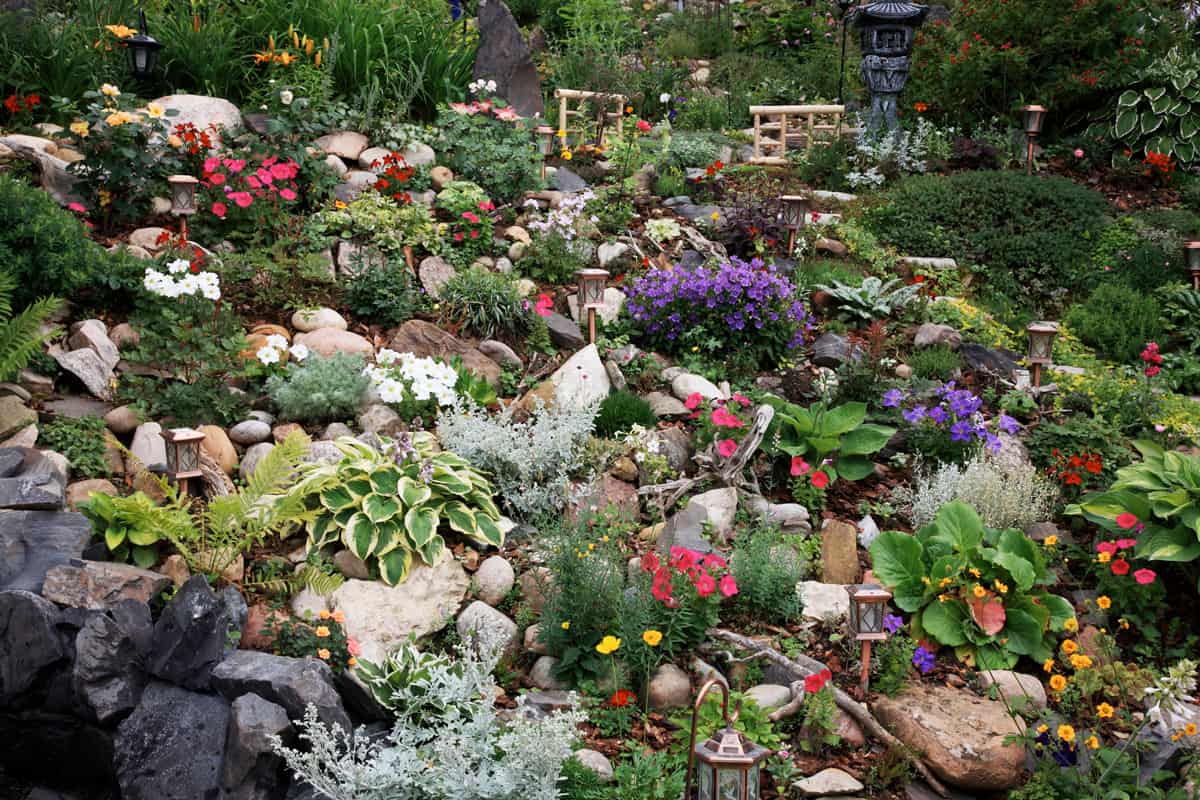
Rock gardens are fantastic places to integrate plants that are hardy. A common favorite for rock gardens is perennials, but other plants will also grow and thrive in this environment. Here are some of the best plants you can put in your rock garden.
- Verbena
- Ice plants
- Dwarf Iris
- Hens and Chicks
- Candytuft
- Ornamental grasses
- Missouri Evening Primrose
- Asters
- Prickly Pear Cacti
- Marcus Dwarf Blue Sage
- Rock Cress
- Creeping Phlox
- Goldenrods
How Do You Arrange Rocks In A Rock Garden?
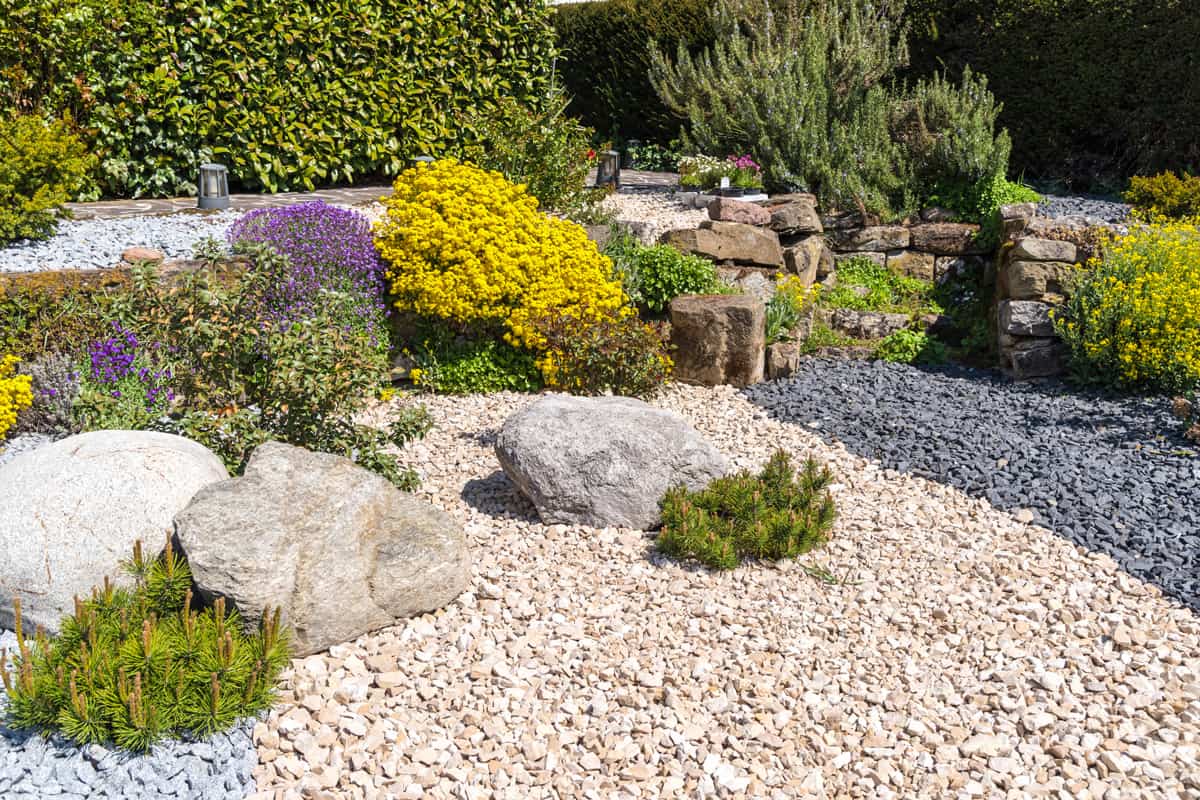
Designing a rock garden can be difficult, especially if you are looking to create a natural look for your garden. There is also the challenge of looking for rocks that will be perfect for this particular function. For a rock garden, choose rocks that will not crumble or easily disintegrate.
To arrange the rocks, make sure to place the biggest and heaviest rocks on the bottom as your foundation. Typically, you can choose rocks that aren't as visually appealing because these rocks are always at the bottom and plants will soon cover them.
If you are planning to do a raised-type rock garden, make sure to get rocks that look pretty since they will be visible amongst your plants. Don't get the same size of rocks as well, try to keep them varied so you can arrange them in different sizes when necessary.
Final Thoughts
Rock gardens can change the way your garden's design will look. Aside from giving your space a primordial element, rock gardens also elevate the plants by giving them a place to shine in your home. Keep your rock gardens lively by adding plants that look beautiful all throughout the year.
Are you looking for more ways to maintain your rock garden? Look no further because we have articles that you will enjoy:



![man replanting herb with yellow flowers for use in landscaping. 15 Perennials That Absorb Water [Incredible Choices For Foundation Landscaping]](https://landscapingbase.com/wp-content/uploads/2022/09/man-replanting-herb-with-yellow-flowers.-15-Perennials-That-Absorb-Water-600x400.png)
![Big custom made luxury house with nicely trimmed and landscaped front yard, South Facing Front Yard Landscaping Ideas [17 Ideas To Increase Your Curb Appeal]](https://landscapingbase.com/wp-content/uploads/2022/09/BIGCUS1-600x400.jpg)
